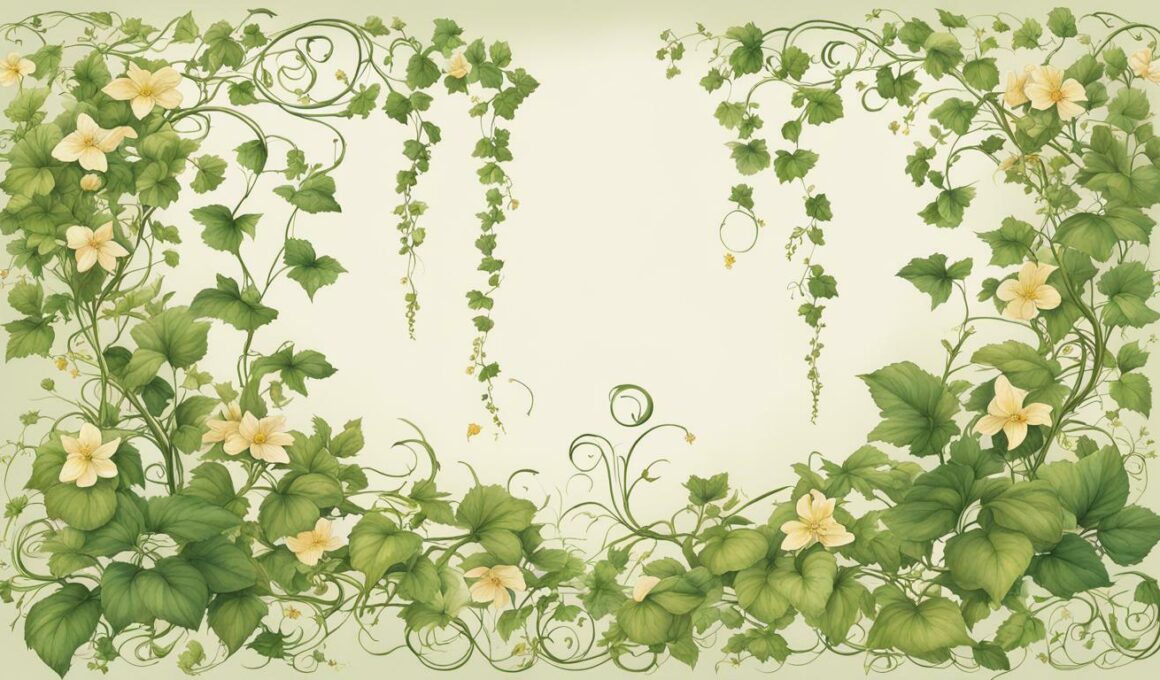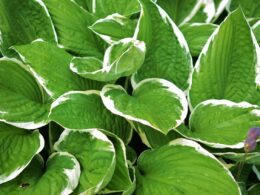If you’re a fan of climbing plants, you’ve probably heard of both the hummingbird vine and trumpet vine. While they may look alike at first glance, these plants do have some differences that set them apart. In this article, we’ll explore whether the hummingbird vine and trumpet vine are the same or different, their unique characteristics, similarities, and differences. By the end, you’ll have a better understanding of which vine will suit your garden or landscape needs best.
Post Summary:- The hummingbird vine and trumpet vine are not the same plant
- Both vines have similarities, such as attracting hummingbirds and climbing abilities
- Their differences include variations in growth patterns, leaf shapes, and flower colors
- Understanding these differences can help you choose the right vine for your garden or landscape
Characteristics of Hummingbird Vine and Trumpet Vine
If you’re considering adding a vine to your garden or landscape, it’s essential to understand the characteristics of the plants you’re interested in. Here, we’ll discuss the characteristics of both the hummingbird vine and trumpet vine, so you can determine which one is the best fit for your needs.
| Characteristics | Hummingbird Vine | Trumpet Vine |
|---|---|---|
| Growth Habit | Twining vine that can grow up to 30 feet long | Vigorous woody vine that can climb up to 40 feet tall |
| Foliage | Heart-shaped leaves that are 2-4 inches long | Pinnately compound leaves with 7-11 leaflets |
| Flowers | Tubular-shaped flowers that are red, orange, or yellow | Trumpet-shaped flowers that are orange or red |
| Unique Features | Attracts hummingbirds with its nectar-rich flowers | Produces seed pods that can be used in crafts and decorations |
As you can see, both the hummingbird vine and trumpet vine have unique characteristics that set them apart. While they share some similarities, such as their climbing abilities, there are also distinct differences in their foliage, flowers, and growth habits.
Characteristics of Hummingbird Vine and Trumpet Vine
If you’re looking for a plant with heart-shaped leaves and tubular flowers, the hummingbird vine may be a great option for you. On the other hand, if you prefer a woody vine with pinnately compound leaves and trumpet-shaped flowers, the trumpet vine may be more your style.
Ultimately, the choice between the two plants will depend on your personal preferences and the specific needs of your garden or landscape.
Similarities Between Hummingbird Vine and Trumpet Vine
Now that we’ve gone over the characteristics of hummingbird vine and trumpet vine, let’s explore their similarities. These two plants share several traits that may make them seem alike at first glance.
| Shared Traits |
|---|
| Both attract hummingbirds with their showy flowers, making them popular garden plants for bird enthusiasts. |
| They are both climbing vines and can reach impressive heights if trained or left to their own devices. |
| They both have lush green foliage that can cover unsightly structures or add privacy to your outdoor space. |
While there are more similarities between hummingbird vine and trumpet vine than differences, it’s important to note that they are distinct species and each have unique characteristics that set them apart.
Can I Determine if My Trumpet Vine is Dead by Comparing it to a Hummingbird Vine?
If you’re unsure about the trumpet vine condition assessment, comparing it to a hummingbird vine won’t provide a definite answer. Despite similarities, different plants have unique growth patterns and traits. To determine if your trumpet vine is dead, examine signs like absent foliage, brittle stems, and lack of new growth.
Differences Between Hummingbird Vine and Trumpet Vine
While the hummingbird vine and trumpet vine share some similarities, they also have several distinguishing features that set them apart from each other. Let’s take a closer look at the differences between these two popular vines.
| Aspect | Hummingbird Vine | Trumpet Vine |
|---|---|---|
| Growth Pattern | The hummingbird vine has a more delicate and slow growth pattern, and typically reaches only 10-20 feet in length. | The trumpet vine is a more aggressive grower and can reach up to 40 feet in length. It can also spread rapidly through underground runners, making it difficult to control. |
| Leaf Shape | The leaves of the hummingbird vine are heart-shaped and relatively small, measuring up to 3 inches in length. | The trumpet vine has larger leaves that are compound, consisting of 7-9 leaflets that can be up to 6 inches long. |
| Flower Color | Hummingbird vine flowers are typically red, orange, or yellow. | Trumpet vine flowers are usually orange or red, but can occasionally be yellow. |
| Flower Shape | The flowers of the hummingbird vine are tubular and narrow, measuring only about 2 inches in length. | Trumpet vine flowers are larger and more trumpet-like in shape, measuring up to 4 inches long. |
| Seed Pods | The seed pods of the hummingbird vine are small and inconspicuous, measuring only about 1 inch long. | Trumpet vine seed pods are large and woody, measuring up to 8 inches in length. |
These are just a few of the differences between the hummingbird vine and trumpet vine. By understanding these variations, you can better choose which vine is best suited for your garden or landscape.
Growing Hummingbird Vine and Trumpet Vine
Now that you know the differences and similarities between the hummingbird vine and trumpet vine, it’s time to decide which one to grow. Both these plants have their unique features and require specific care.
Hummingbird Vine
Hummingbird vines are easy to grow and maintain, making them an excellent choice for beginner gardeners. They prefer full sun to partial shade and well-drained soil. Ensure that the soil is moist but not wet, as waterlogged soil can lead to root rot.
Hummingbird vines can be propagated from seeds or cuttings. Sow the seeds in spring or early summer indoors, two to three months before the last frost date. Alternatively, take 5 to 6-inch cuttings from mature plants in early summer, dip their ends in rooting hormone, and plant them in well-draining soil.
Pruning is essential to keep the vines in check and promote blooming. Cut back the overgrown or damaged stems in late winter or early spring, leaving two to three buds on each branch.
Trumpet Vine
Trumpet vines are robust and fast-growing plants that can reach up to 30 feet in height. They grow well in full sun and almost any soil type, including loam, sand, and clay. But, they prefer well-drained soil and may not bloom well in waterlogged soil.
Trumpet vines propagate readily from seeds or cuttings. Plant the seeds in early spring or late fall, one inch deep in well-draining soil and keep them moist until germination. Alternatively, take 6 to 8-inch cuttings from mature plants in early summer, dip their ends in rooting hormone, and plant them in a mixture of perlite and soil.
Trumpet vines require minimal pruning. Cut back the overgrown branches in late winter or early spring, trimming just above the new growth.
Now that you have all the information about growing hummingbird vine and trumpet vine, you can choose the best one for your garden. Remember to consider the space, soil type, sunlight, and maintenance requirements while making a decision.
FAQ
Q: Is the hummingbird vine the same as trumpet vine?
A: No, the hummingbird vine and trumpet vine are different plants.
Q: What are the characteristics of hummingbird vine and trumpet vine?
A: Hummingbird vine and trumpet vine have similar characteristics such as their climbing abilities and attractive flowers, but they differ in terms of growth habits, foliage, and flower colors.
Q: What are the similarities between hummingbird vine and trumpet vine?
A: Both hummingbird vine and trumpet vine can attract hummingbirds with their vibrant flowers and have the ability to climb and cover vertical surfaces.
Q: What are the differences between hummingbird vine and trumpet vine?
A: Hummingbird vine and trumpet vine differ in terms of growth patterns, leaf shapes, and flower colors. Hummingbird vine has heart-shaped leaves and typically bears flowers in shades of pink, while trumpet vine has compound leaves and produces orange or red trumpet-shaped flowers.
Q: How do I grow hummingbird vine and trumpet vine?
A: To grow hummingbird vine, provide a sunny location and well-draining soil. It can be propagated from seeds or cuttings. Trumpet vine prefers full sun to partial shade and well-drained soil. It can be propagated from seeds or by root cuttings.







